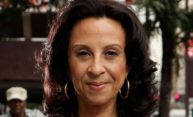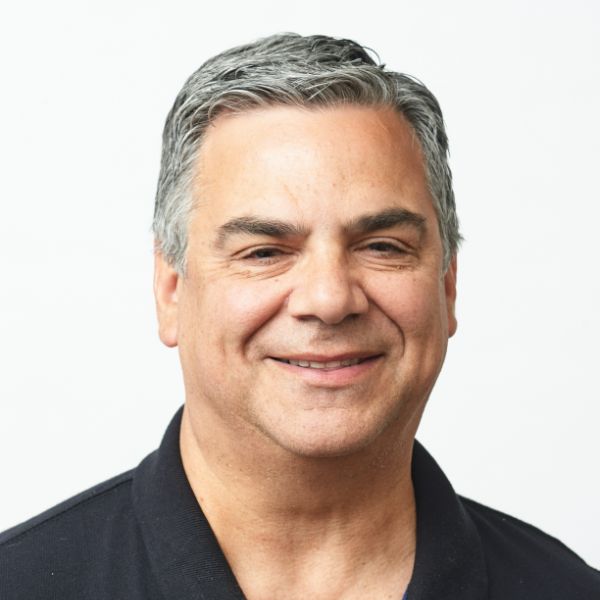Sasha Eloi-Evans ’05, ’17W (EdD) is an academic programming coordinator for the Office of Minority Students Affairs and a lecturer in the Department of Linguistics. She’s also a student advisor for the Douglass Leadership House, Minority Students Advisory Board, and Women’s Leadership Alliance, and the coordinator of the Women of Color Circle.
In this essay, she reflects on diversity in higher education in the nearly 50 years since Martin Luther King Jr.’s death.
As we approach the University’s 18th annual Martin Luther King Jr. Commemorative Address, I can’t help but reflect on King’s push for justice. The students I work with are thinkers—independent, with opinions of their own, and unapologetically connected to their roots and culture. They persevere and overcome. They have an ability to maintain hope even in the ugliest moments.
This year will mark the 50th anniversary of King’s death. Since that fateful spring of 1968, our country has instituted a number of positive judicial, legislative, and policy changes. For example, tribal colleges were established, women gained admission into elite institutions, Title IX of the Civil Rights Act changes, the Higher Education Act was amended and reauthorized, and the Americans with Disabilities Act of 1990 was signed into law. But too often, the more things change, the more they stay the same.
Schools across the country experienced increased integration from the early 1960s to the 1980s. Since then, however, with the end of so-called “forced-busing” to transport black students to majority white schools, white resistance has derailed educational desegregation. In cities such as Boston and Chicago, and places like Rochester, whites moved from cities into the suburbs to avoid integration in a process known as “white flight,” depleting both the numbers of students and the financial resources for public schooling. More recently, Supreme Court deliberations in the Fisher v. University of Texas cases (2012, 2016) saw renewed efforts to challenge the methods institutions use to diversify their student bodies. Although the Supreme Court has upheld narrowly tailored efforts to diversify, many of the primary and secondary schools that “feed” institutions of higher education remain segregated, largely as a result of pronounced residential segregation across the United States. We must acknowledge that this segregation has an impact on residential campuses at universities such as Rochester. Most students who come to campus likely have had limited interactions with people of another race.
Not too long ago, I had a student in my office whose struggles socially—feelings of aloneness and hostility on campus—were contributing to academic challenges. I had come to know her as a strong, passionate, and determined leader, but she was clearly feeling discouraged and defeated. I remember pleading with her to forgive herself for the unfulfilled expectations of her time in college playing out as she had seen in movies. Why could she not proclaim that her college years were the best years of her life, as did many of her white classmates? Why did so much of her everyday life revolve around microagressions, protests, feeling like an outsider, and demanding to be counted as an equal among her peers? Examples from popular culture do not necessarily capture the nuance and difficulty of implementing cultural reform and inclusion as a racial or ethnic minority student on a predominantly white campus. Integration and diversity are both vital to creating campuses that look the part, but alone, they cannot create an inclusive community.
While there are markers of progress, campus dynamics must shift to more fully support students of color. The National Center for Education Statistics reported that between 1976 and 2014, the enrollment of black and Latino students in higher education increased significantly. However, increased enrollment alone isn’t a sufficient measure of success. Last April, the National Student Clearinghouse Research Center reported that at four-year private institutions, the six-year graduation rate for Latino students was 72.3 percent and for black students, 57.3 percent. Institutions of higher learning can and must do a better job of not only recruiting students of color, but also of making campuses more aware and supportive of students.
Martin Luther King Jr. championed individual and collective commitments to truth and justice by emphasizing civility and human dignity. When Michael Eric Dyson delivered the University’s MLK Commemorative Address in 2012, he described King’s commitment to eliminating poverty as a push for justice, not charity. On April 4, 1967, in a speech given at Riverside Church in New York City, King said “True compassion is more than flinging a coin to a beggar; it is not haphazard and superficial. It comes to see that an edifice which produces beggars needs restructuring.” King recognized that an individual can lose their will to be generous when generosity is costly or inconvenient. He, therefore, advocated for dismantling oppressive systems by recovering the human spirit of compassion, love, and collective action.
An institution of higher education’s approach to diversity can be fleeting if it is approached as charitable work or with a “we’ve-done-all-we-can-do” attitude. This static perception undermines notions of equity and responsibility, and validates the “box-checking” and “bean-counting” practices that have permeated institutional efforts to “achieve” diversity. No longer will students of color accept merely existing on campuses as “different” or “other.” They rightly expect to have a sense of real belonging, a chance to call their college years the very best years of their lives.
Institutions must be supportive of the social and cultural needs, in addition to the academic ones, of all of their students, and do so by instituting inclusive habits of the mind and heart in the entire community. Looking forward, the focus should be about eradicating the exclusionary practices that require students to change who they are or fight herculean battles in order to be successful. Diversity efforts at all institutions should be about acknowledging and appreciating students for who they are—making it difficult to dismiss them or their concerns.
King said that great leaders must be “in love with justice . . . in love with humanity.” University leaders can model inclusive habits of the mind and heart by cultivating critical voices and practices, while developing programming that increases the cultural competency of their colleagues, faculty, staff, and students. Only then will institutions be at the forefront of contributing to the type of society dreamed of by King.

Maria Hinojosa to deliver MLK Commemorative Address
Four-time Emmy Award winner Maria Hinojosa will deliver the 2018 MLK Commemorative Address in Strong Auditorium on Friday, January 19.
The 6 p.m. event is free and open to the public.
Hinojosa is the anchor and executive producer of the Peabody Award-winning show Latino USA, distributed through NPR, and anchor and executive producer of the PBS show America By The Numbers With Maria Hinojosa.
The MLK Commemorative Address was instituted in 2001 to promote diversity, freedom, civil rights, and social justice. It’s cosponsored by the Office of the President and the Office of Minority Student Affairs.
In the fall of 2016, the Presidential Commission on Race and Diversity recommended that Martin Luther King Jr. Day become a University holiday beginning in 2018, reflecting institutional support for the ideals of diversity and equality expressed in the civil rights movement. At the first meeting of the Presidential Diversity Council in December 2016, members voted unanimously to support the move.



